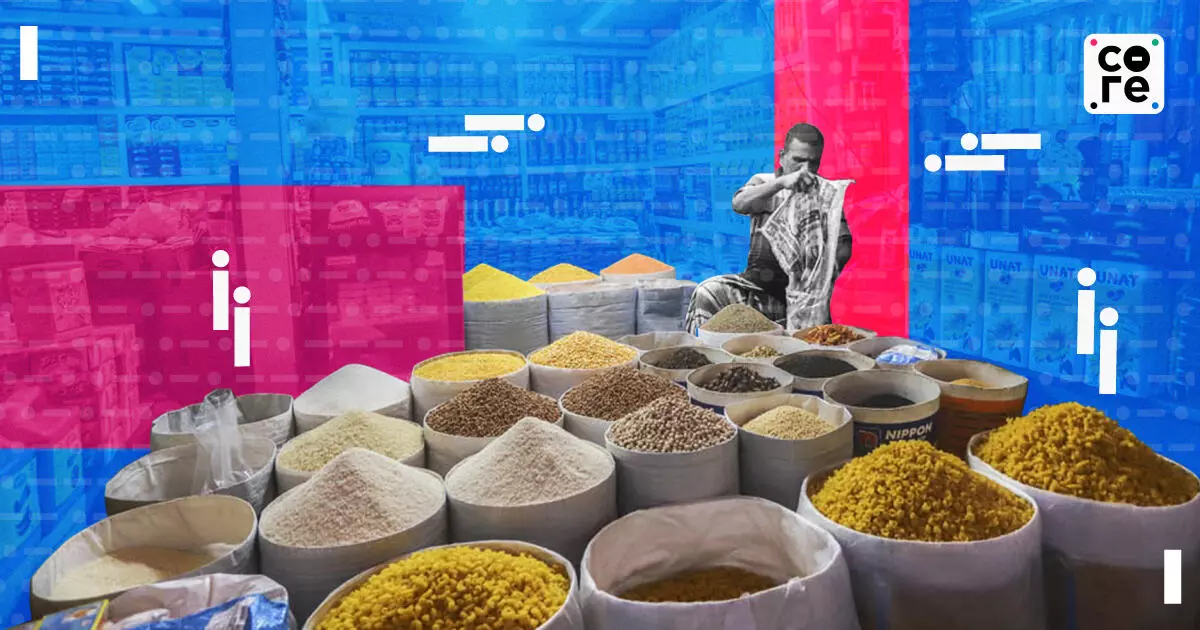
Urban FMCG Growth Isn’t Trailing Rural, It’s Just Downtrading
While quick commerce and D2C exist more in urban areas, they’re too small to move the market, according to research and monitoring agency Kantar.

India’s rural markets appear to be outpacing urban markets in terms of fast moving consumer goods (FMCG) consumption for most of FY25, believe industry players and analysts. However, research and monitoring agency Kantar has found that the urban basket has grown too, but it’s not reflected in total numbers due to a higher amount of downtrading when consumers replace costlier, well-known brands with local, unbranded products in the urban centres.
“The broad story which most manufacturers keep talking about is urban tightness and rural areas showing green shoots. That’s true if you look at only the large brands, branded purchases, et cetera. If you include local brands and unbranded sales, actually speaking, urban areas have grown more or less at par with last year. Rural is where we are seeing some amount of sluggishness,” K Ramakrishnan, MD - South Asia World Panel Division of Kantar, told The Core.
Branded Sales Vs Overall Else
Kantar’s data indicates that urban consumption is growing faster than rural consumption. In the January-March quarter of 2025, FMCG volumes grew 4.4% in urban areas, while rural areas grew at 2.7%. The overall growth for the quarter was at 3.5%, making it the slowest growth seen in the last eight quarters.
Kantar measures all incoming products into a household, and not just brands. It covers 85,000 households, with about 45,000 of them being urban, and the rest rural.
Another consumer intelligence firm, Nielsen IQ, which tracks branded sales, however, reported a different story.
As per its data, FMCG volume growth in rural areas has been surpassing urban for the last five quarters up till the January-March quarter. In the March quarter, rural growth was at 8.4%, whereas urban growth was at a mere 2.6%.
Clearly, the urban markets are showing signs of downtrading. Especially in cases of edible oil, where consumers can shift to loose oil purchase, which takes sales away from branded players.
“There could be downtrading, and some smaller brands are gaining. If you look at it from that lens, urban is tight for formal players, larger brands. But urban consumption has not been suffering because they have been replacing it,” says Ramakrishnan.
Indian Household Fabulous At Money-Managing
Kantar said that the overall consumption trends will follow the same path for the next two quarters. It expects growth to pick up only in the third quarter of the calendar year.
Yet, it’s not all bad news for large branded players. Consumers tend to change preferences as per changing economic situations.
“The Indian household is a fabulous money-managing household. There's no 100% large brand household, 100% small brand household. It's always going to be a mix. That mix will keep changing depending upon the situation at that moment of time. If consumers feel tightness, they tend to slow down on the larger brands and go for smaller brands or the unbranded. But this can affect only categories like foods,” said Ramakrishnan.
While a lot of noise is being made by direct-to-consumer (D2C) brands as well as quick commerce, they are yet to make an impact on the overall market.
“D2C cannot swing this market at all. It's still a very, very small part of the total market. Quick commerce, too is a small part of the overall pie,” he adds.
In spite of changing urban mood, bigger brands have remained stronger in rural markets, indicating positive rural aspirations. This market is also expected to pick up soon due to a variety of factors, including expectations of good monsoons, benign political climate, as well as an increase in non-farm income.
“Schemes like Jawahar Rojgar Yojana, as well as the service economy, are showing positive signs. In a macroeconomic sense, the rural market is showing positive signs,” opines Ramakrishnan.
Home Care Emerges Winner
Government schemes have a wide-ranging impact on FMCG sales both directly and indirectly. In the March quarter, overall sales of food and beverages showed the slowest growth of 3.2%. This was impacted by free wheat distribution schemes that ate into the sales.
“If you take the FMCG basket, about 68% is food. Within that, about 30% is atta (wheat). It has the ability to swing the growth significantly. Its growth dropped this quarter and in the year as well,” explained Ramakrishnan. So much so that even a rally in beverage sales couldn’t pull up the overall growth numbers.
The personal care market is also showing fragmented signs. While personal hygiene products like soaps and handwashes held on, personal grooming that includes hair oil etc couldn’t keep pace. The only segment that’s beating the blues is home care.
“Home care has shown growth, higher than the previous year. It’s not substantial, but higher. It’s primarily led by fabric care, which is either wash, detergents, or fabric conditioners etc. The others like toilet/bathroom cleaners, insecticides, are more or less at a similar growth as last year. But detergents and conditioners have led the way,” says Ramakrishnan.
While quick commerce and D2C exist more in urban areas, they’re too small to move the market, according to research and monitoring agency Kantar.
Zinal Dedhia is a special correspondent covering India’s aviation, logistics, shipping, and e-commerce sectors. She holds a master’s degree from Nottingham Trent University, UK. Outside the newsroom, she loves exploring new places and experimenting in the kitchen.

